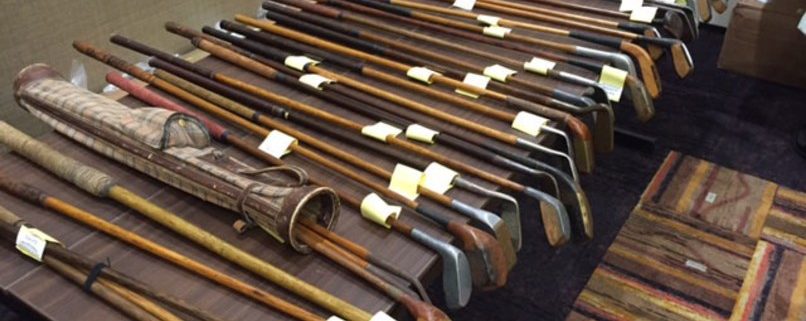Preserving golf history is something the Golf Collectors’ Society takes seriously. Very seriously
After joining the Golf Collectors’ Society in the last year, I attended its annual meeting earlier this week in the Poconos. There I encountered a collection of golf lovers that thrives on the very idea of being in “way back” mode as it seeks to preserve golf’s past—even as the sport speeds forward. And I also made my first venture into hickory golf.
The GCS has been around since 1970, begun by collectibles icon Joseph Murdoch and Robert Kuntz. From the beginning, the GCS’s goal was to have its members bond in the common pursuit of the collection and preservation of golf’s treasured artifacts, which would ensure the game’s history would not be lost and forgotten. In time, the GCS was the place to turn to for research and understanding about the way golf life used to be. It’s a multinational group whose membership was in the 2,000s at one point but now stands at 860 and is suffering from the Internet cutting in on its grip of being the authority on all things vintage. How to grow the membership was a big discussion topic at the gathering.
I may be a GCS newbie, but I’m in my fourth decade as a golf journalist so I couldn’t turn off my reporting mind as the four-day meeting began. I found that my first-hand experience with the society met my expectations about the group. The members skew on the senior side with the financial wherewithal to collect iconic items, focusing on old and rare as the best purchase.
At the PBA Galleries-run auction last Sunday, by my unofficial statistics, 134 lots were sold to the roughly 50 members onsite and numerous others connected electronically for $66,535, not counting the buyer’s premium. But the members weren’t going to have market prices dictated to them and didn’t even offer a bid on 67 of the 201 lots offered up, plus, 102 items went at prices lower than the estimates. Only 20 were bought at prices within the estimate.
Some of the antique clubs up for auction at the Golf Collectors’ Society annual meeting.
The typical GCS member is not withdrawn or timid. Members are engaged about the game, love it to the point of excess, even to having a collection of 179 Bulls Eye putters, as William Fry of Reading, Pa., has. You may ask “why” but you can’t help but admire the devotion to golf history. Many members pick a specialty area they focus on, whether it is equipment or ephemera, as is the case with Phil Kostolnik of Minnesota, who was a go-to guy for me in asking questions about the auction. Members were approachable, first-timers were recognized, and vintage members recognized, as with member Gene Boldon, a former Tuskegee airman, who was given the GCS Founders Award in an emotional speech. Members from Canada and China attended, and next year’s event at golf mecca Pinehurst should be an even bigger draw.
Ultimately, I didn’t join the GCS to report on members’ buying habits or necessarily be a “player” in the artifact field; I wanted to experience the historical appreciation the group possesses. And I felt that the most where it really matters: with vintage hickory on the golf course. Adorned in plaid shorts (I left my plus-fours at home), equipped with eight wooden-shafted clubs loaned out by Bill Reed of Des Moines and vintage balls by event organizer Greg Shayka of the Metropolitan Hickory Society, I headed over Monday to the Donald Ross-designed East Course at Pocono Manor with more than a wee bit of consternation. I was already having a bad golf year with modern clubs, so hickory was playing with my mind as I tried my first iron on the driving range.
However, I found myself focusing on the feel of the club more than I had all year, and spurred on by the contagious hickory love of playing compadres Jason Ross, Ari Flaisher and David Reh—the Philly Phanatics of hickory golf—I settled into the round as best I could. Some early 8s hurt the scorecard more than my mind, but I parred my sixth hole, felt myself slowing my swing down and swinging with less stress, especially feeling it with the Brassie off the tee. I was hitting the niblick better than my regular short clubs. I played my last 10 holes three over par, with a birdie. Later that night at the banquet, which featured former amateur star and Philly native Jay Sigel, I was mildly shocked and plenty amused to be called up to get a third-place medal in the Open Hickory event, but saw that some things hadn’t changed for me, hickory or steel: I’d won my medal in the net competition.
Source:Golf Digest
http://www.golfdigest.com/story/preserving-golf-history-is-something-the-golf-collectors-society-takes-seriously-very-seriously



